
Aging hippie at the Inter Inn.
Leaving the aging hippies behind in Chiang Mai, we tuk-tuked (new verb) to the bus station. The bad news was the 8:30 bus was full…the good news: we bought the last 2 tickets on the last express bus of the day to Chiang Khong on the border with Laos. Next day we ferried across the Mekong to HuayXai (pronounced way sigh).
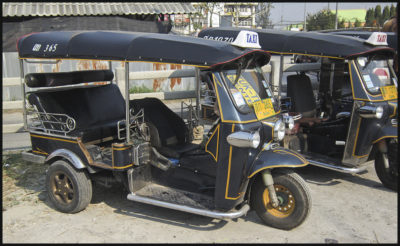
Tuk-tuks
Our intro to Laos has been mixed. In the border towns and one night lay-over spots, the locals are less than honest. After all our good experience in Thailand (not that they are all angels), it’s a wake up to have to be more vigilant.
In HuayXai there is the obligatory wat. The monks here were very young, and we understand that in the mornings they all line up in the city with bowls and the people fill them up with rice and hopefully something to go on top. The wats often provide the young monks with a better education than the public schools.
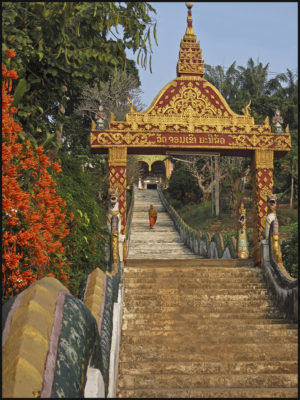
Obligatory wat.
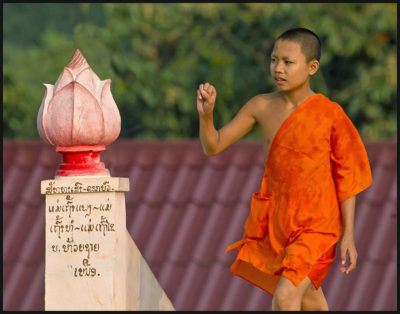
A young monk hurries to class.
Interesting that the communist government in Laos allows rampant capitalism. Street markets are very busy and a million little shops operate openly. The heavy hand of government isn’t obvious to the casual observer. In fact, we haven’t seen any sign of government whatsoever since we crossed the border.
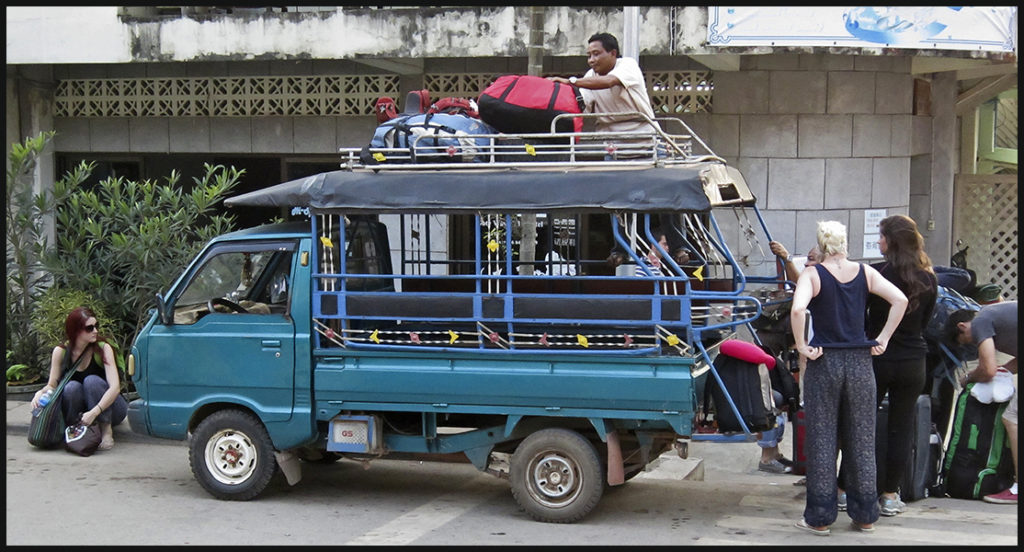
The most common public transport along the gringo trail.
The Lonely Planet people extol the Gibbon Experience so we decided to try it. It is pricey for this part of the world, but the cause is good and they do a booming business. Started by a French tour group nearly 10 years ago, they are protecting a large area of the Bokeo rainforest for gibbon habitat. They pay the locals to run the tourist operation instead of poaching the gibbons. The 3 day tour is geared for the young of body, however, and the trek in nearly killed us. The mountains are steep, and they have never heard of a switchback, which means trails go straight up and straight down. The gimmick is a series of zip lines; one a whole kilometer in length. The accommodation is in tree houses, shared by 6 to 8 people, accessible only by zip lines. Privacy is provided by opaque mosquito nets. Haven’t had much problem with mosquitoes, though. We expected to be eaten alive.

The tree house living. Entry is by zip line and food is delivered the same way.
The birds are spectacular, but the guides don’t allow much time to dawdle along looking at wildlife.
On day 2, we did have Wally, a local guide, all to ourselves and made him slow down.
From our tree house canopy view we saw Hornbills, a lizard pair, and many colorful birds. Sadly, all too far away for pictures. In the mornings the gibbons are active and they sing as they move through the trees. We heard them very close, but in the early fog I only managed to see 1 swinging through the trees. No one else in our house saw them, but another tree house, however, was treated to quite a show. Luck of the draw. Watch the video with link at the bottom of this post to hear the eerie sounds of the gibbons. If we were to do it again we’d refuse to be marched around to various zip lines all day, and spend more time in the tree house looking for canopy dwellers. However, the zip lines were fun, and eventually Craig and I figured out how to do them without coming in too fast and splatting into the tree…or too slow and having to pull yourself along the cable to get to the end.
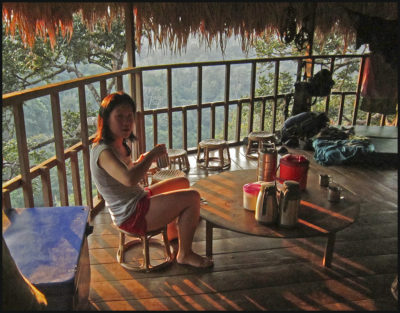
Tree house living.
The locals that run the “experience” live in a village at the beginning of the walking part of the trek.
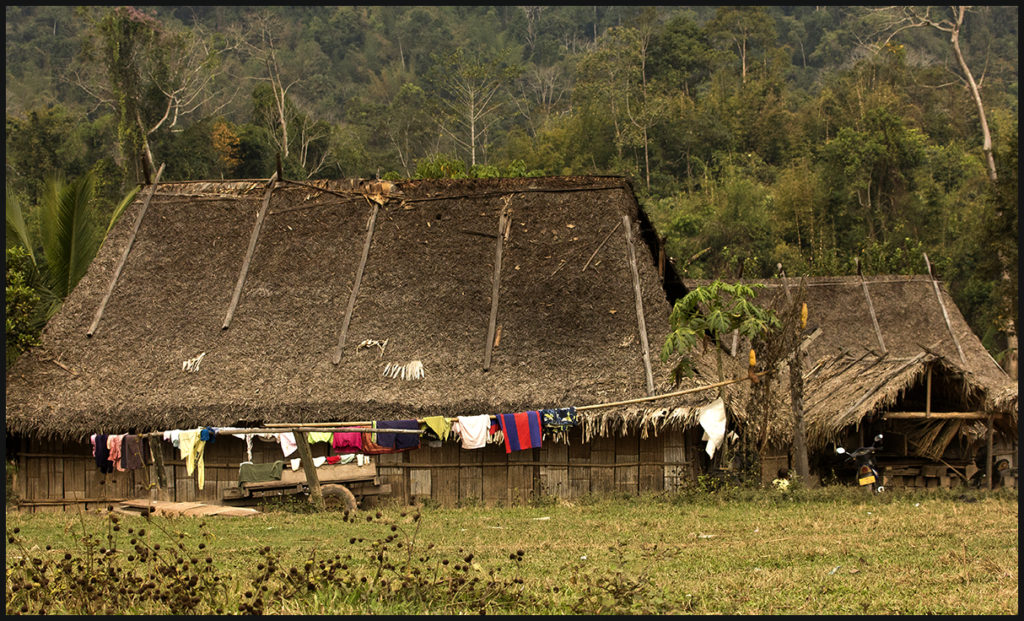
Village house.
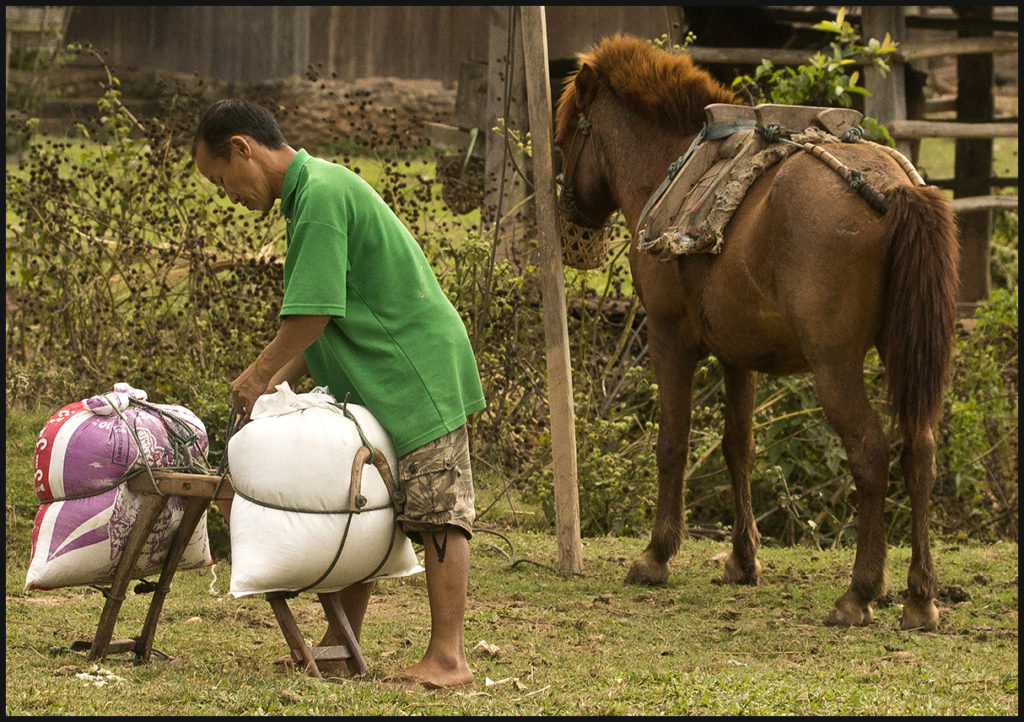
Mountain transport hauls in the food, not the trekkers.
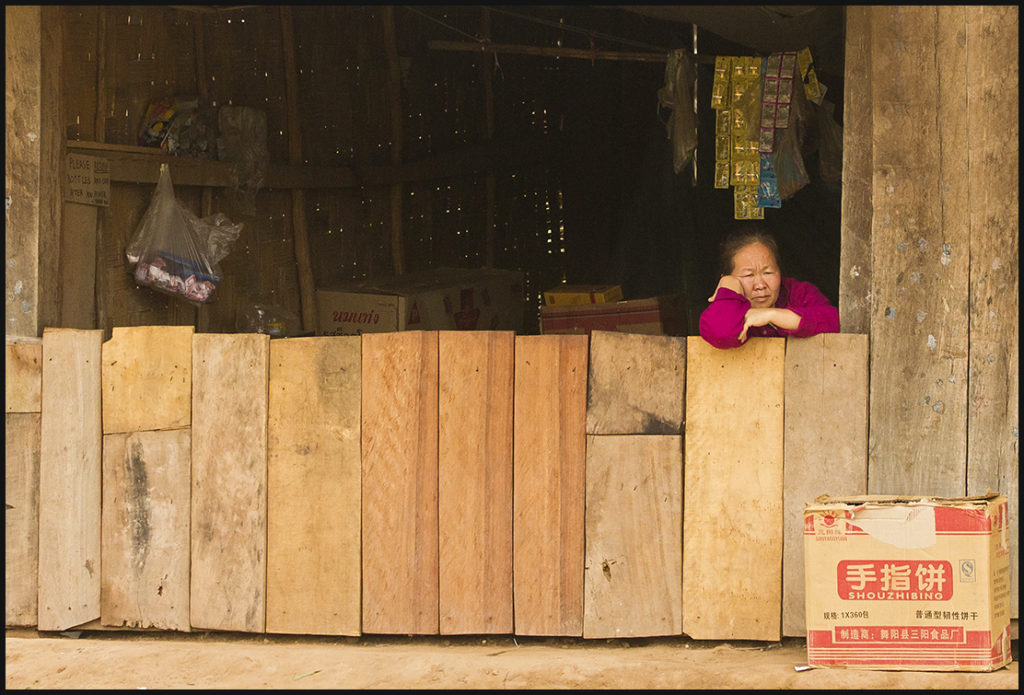
Slow day at the shop.
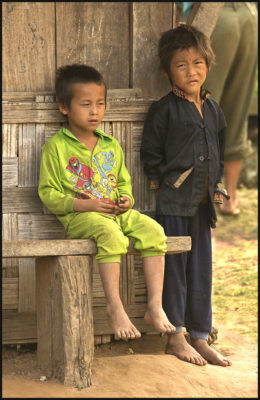
Village kids.
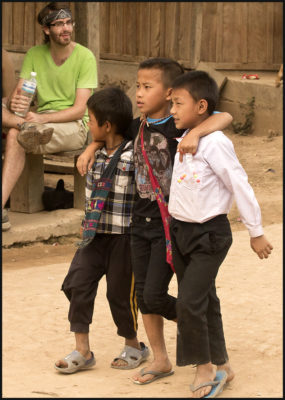
Here comes trouble.
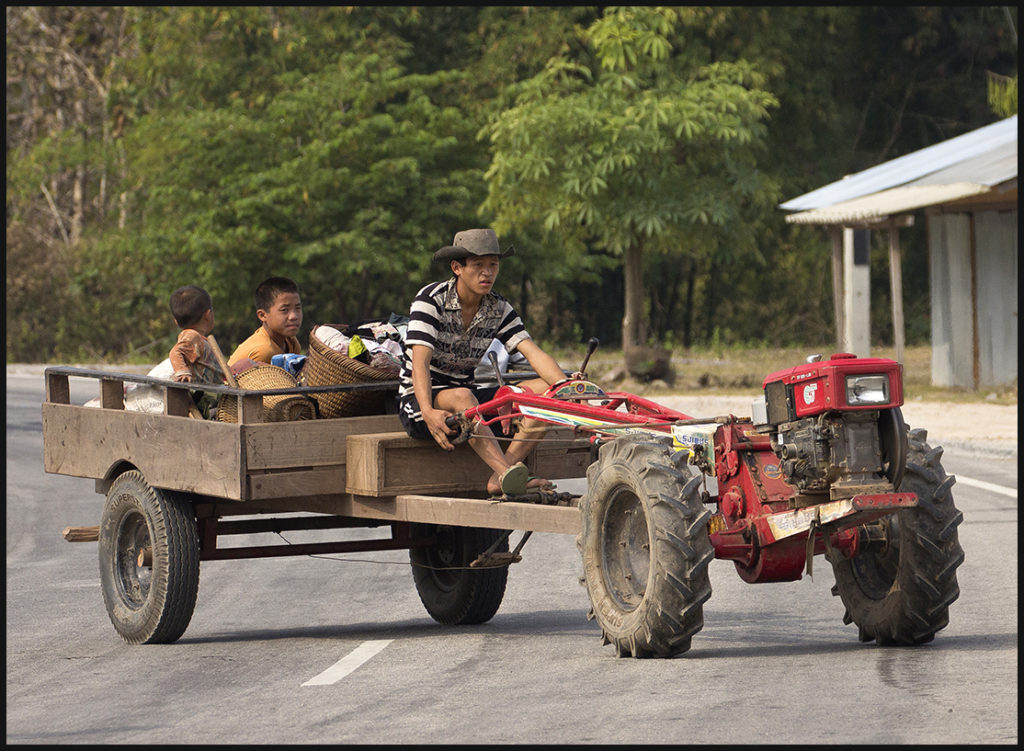
The all purpose farm and town vehicle.
Back for one night in HuayXai. In the morning we catch a slow boat to LuangPrabang. It takes 2 days with a one night layover in a dive of a town strictly there to accommodate the tourists (is our take on the situation). However, the boat ride is a delight. We expected wall to wall activity on the Mekong, but were totally wrong, at least along this stretch. (It is a huge river that starts in the Himalayas and exits in a delta in Vietnam.)

Pushing off one of the slow boats.
There is some river traffic, and several villages along the way, but most is fairly wild jungle. That’s not to say that it hasn’t been logged heavily in place. The river is lined by treacherous rocks (mostly basalt and limestone, we think) and the pilots have to know what they are doing. Even now, in the dry season with low water, the current still moves right along. It’s obvious from the water marks and high dunes, that the Mekong in flood must really rage.
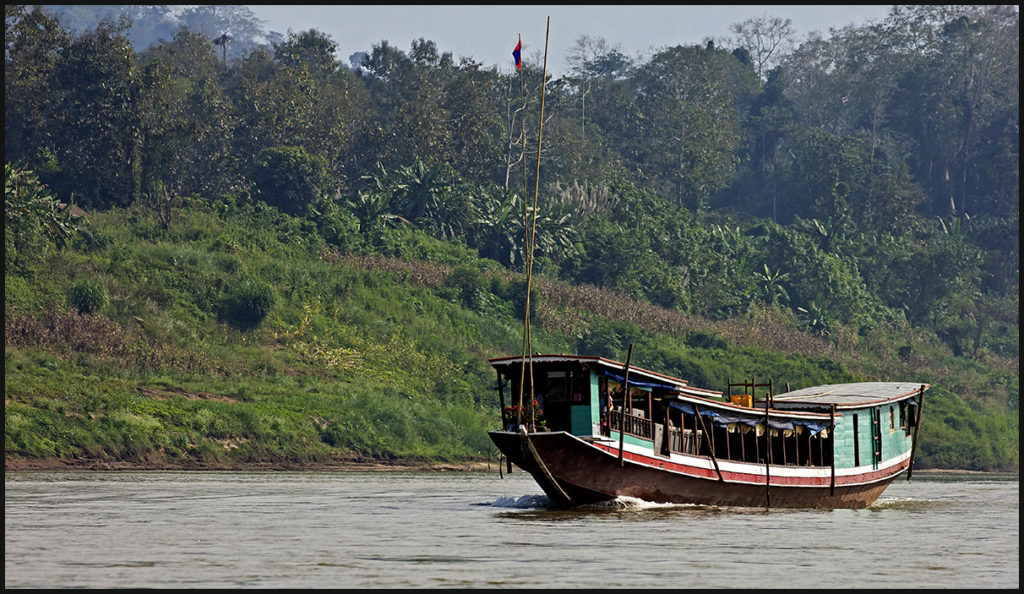
A slow boat.
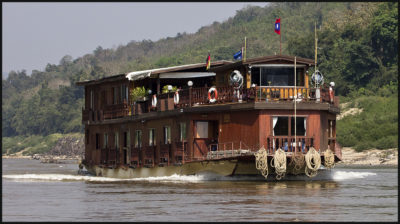
Deluxe river transport.
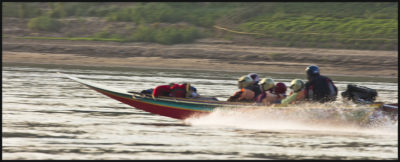
Fast boats make the trip in 6 hours, although it’s risky.
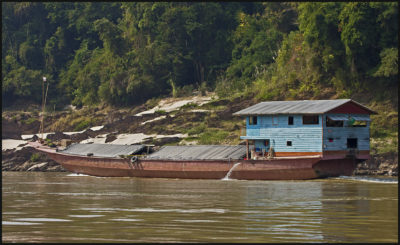
A live aboard freighter.
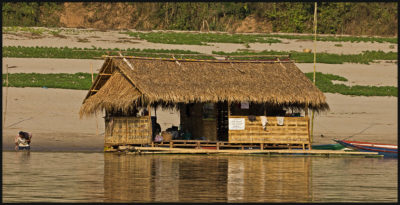
Floating shop along the river.
Life for the local kids looks like fun, but we imagine life for the adults is very hard. They use little flat bottom skiffs that are only for the agile. It’s amazing to see them balancing in a crouch on the ends and paddling at the same time. The boats have little gas engines to get back upstream.
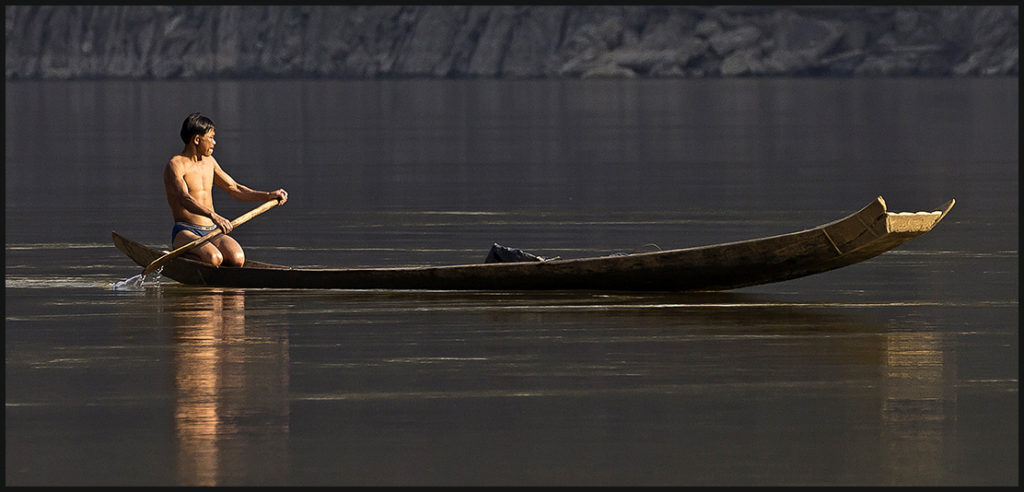
Mekong skiff.
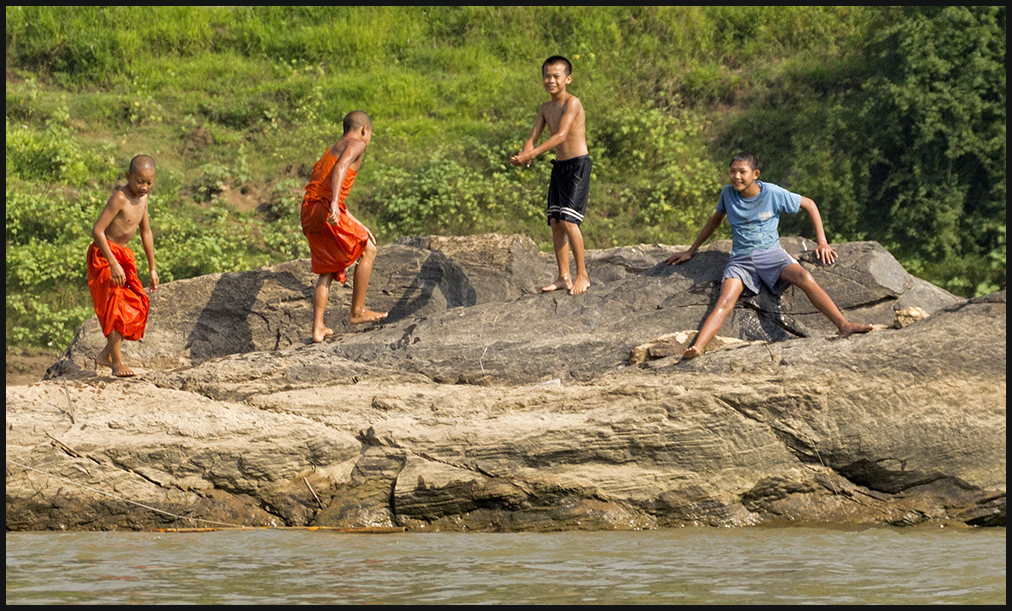
Monks play with the other children.
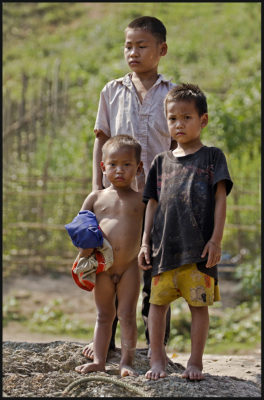
Brothers along the river edge.
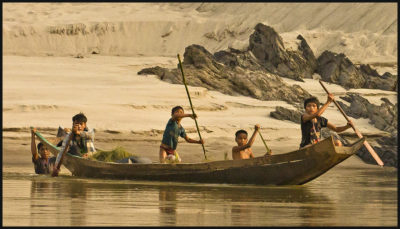
Children playing.
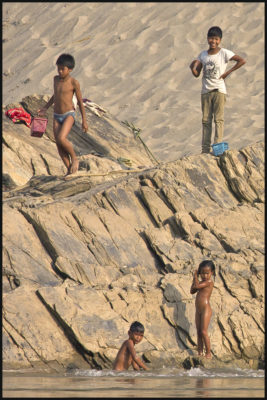
Bathing in the Mekong.
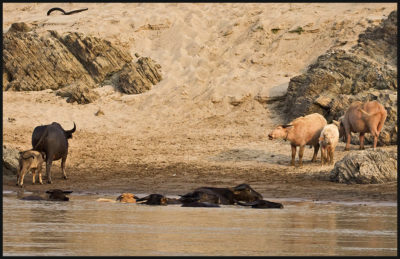
We saw lots of water buffalo (many lolling in the water), cattle, goats, and two working elephants along the banks; but very few birds. Was surprised there weren’t any ducks.
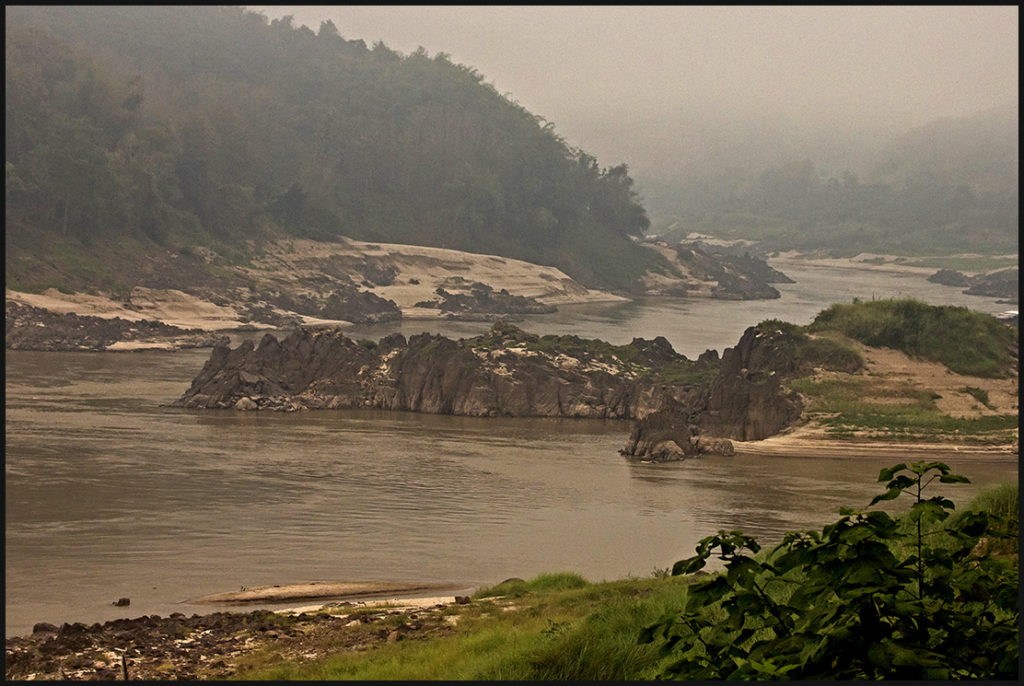
A misty morning, blessedly cool before the heat of the day.
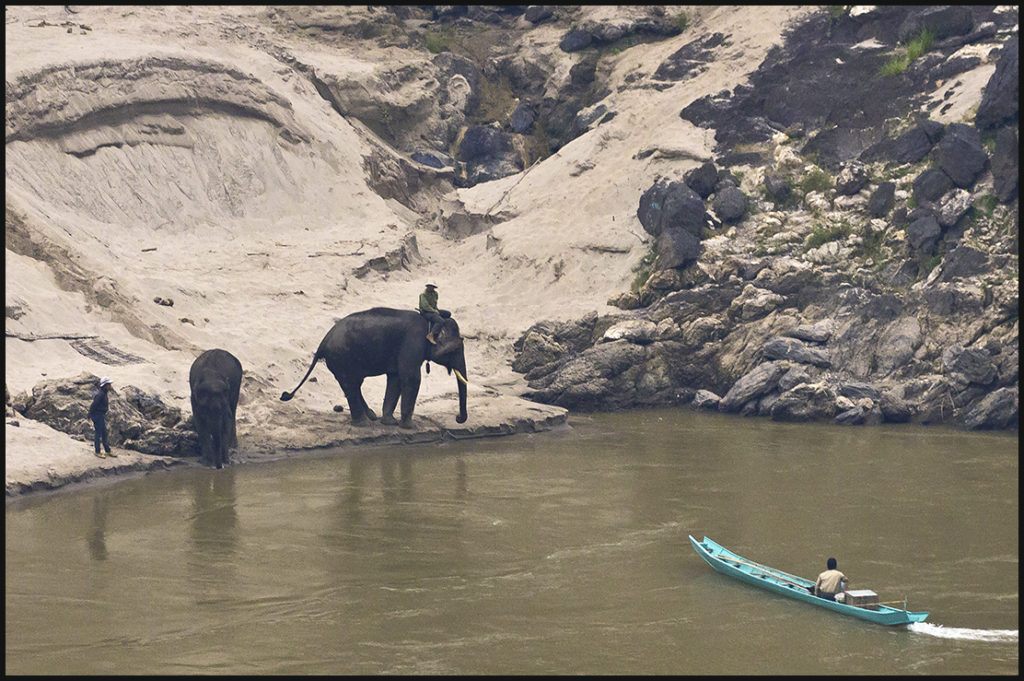
Elephants go to work early for the same reason…to avoid the heat.
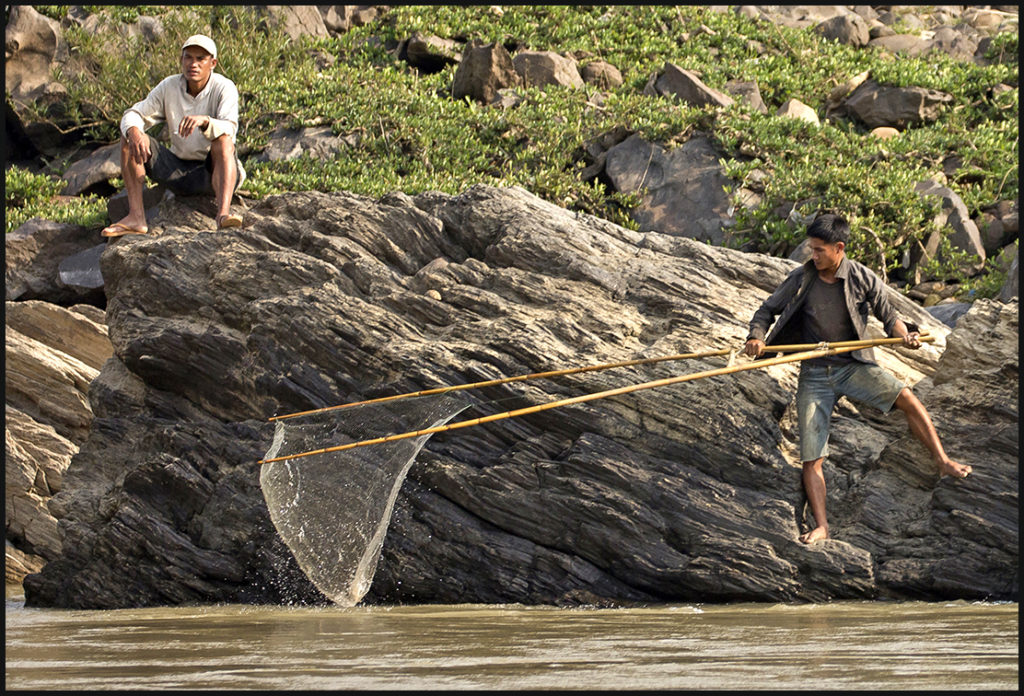
Fishermen try their luck in the murky water.
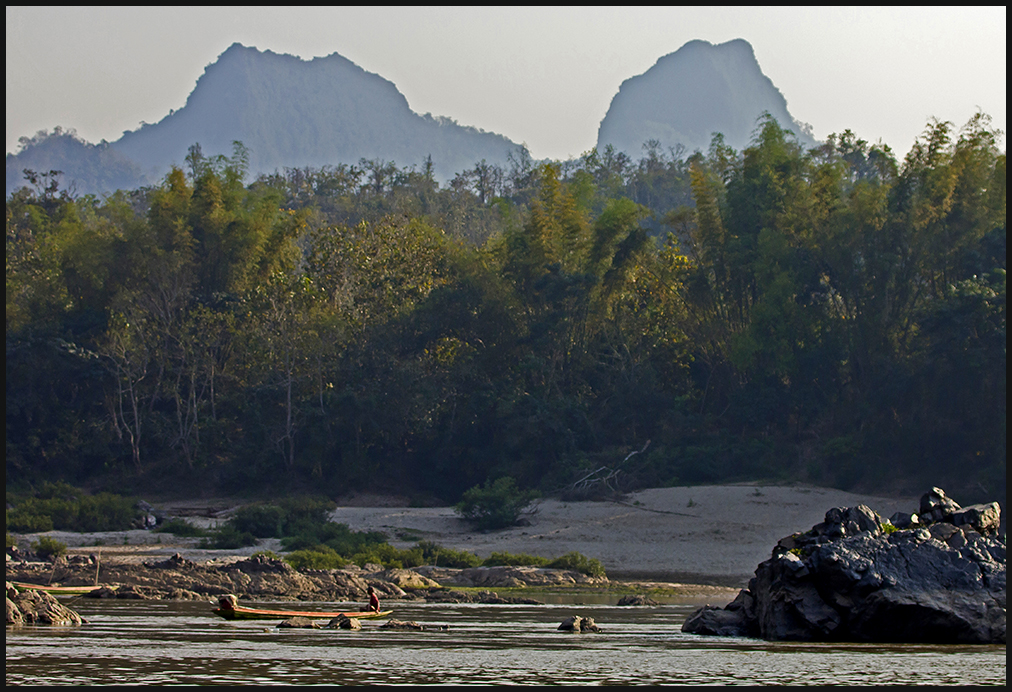
Nearing the mountains near Luang Prabang.

A very common butterfly.
Arriving in LuangPrabang we found most hotels full. Finally we found a lovely hotel, pricey by local standards at $30/night, but it has lily pad ponds out back, a real bath tub, air conditioning and a comfortable bed and pillows…all very hard to find normally. We are happy and will leave you here until next time.
Video link here: https://youtu.be/frShRBeGgw0
